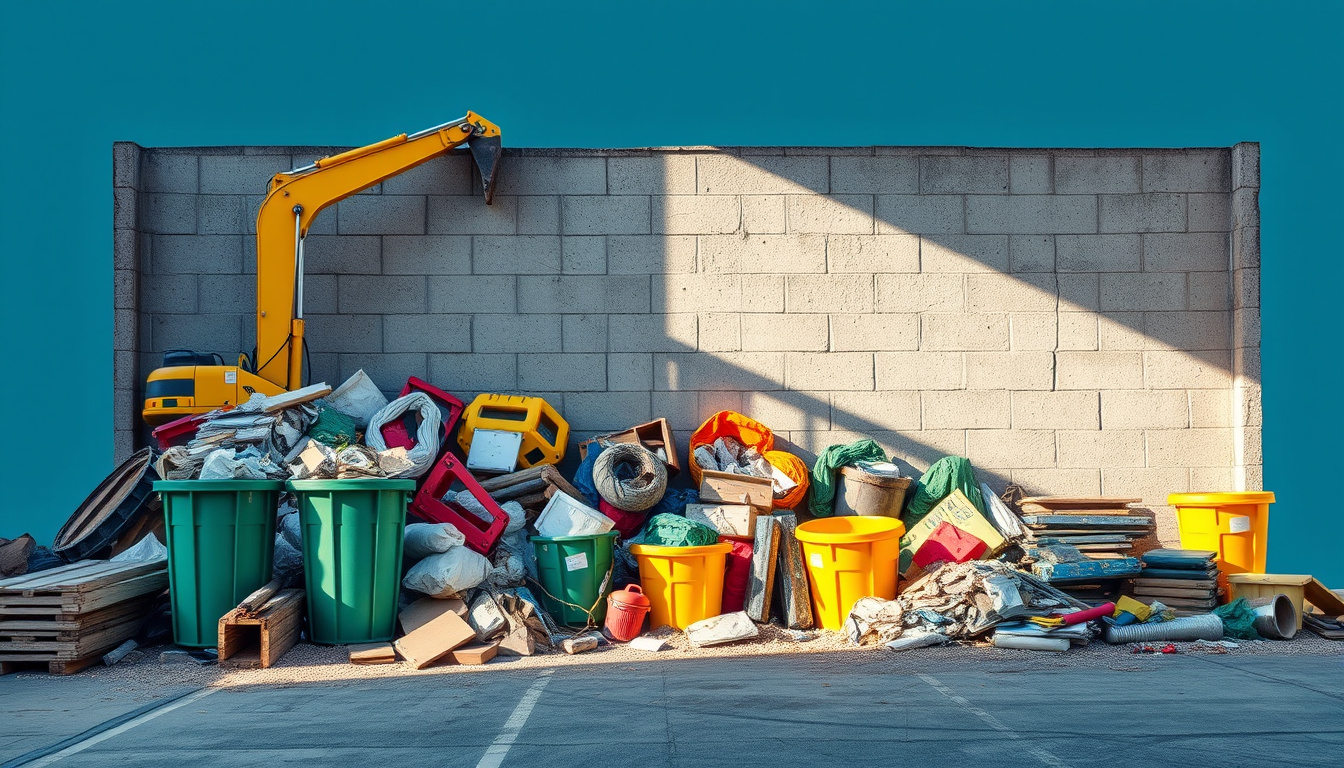Demolition debris removal is a critical component of any construction project. Efficiently managing and disposing of demolition waste not only keeps the construction site safe and organized but also minimizes environmental impact and helps maintain project timelines. Whether you’re working on a small residential teardown or a large commercial demolition, adopting the right strategies for demolition debris removal can save time, reduce costs, and promote sustainability. In this article, we’ll explore top tactics to streamline debris removal, improve onsite safety, and ensure compliance with waste regulations.
Why Efficient Demolition Debris Removal Matters
Before diving into specific strategies, it’s essential to understand why effective demolition debris removal is so important:
- Safety: Debris can pose hazardous obstacles that lead to accidents or injuries if not promptly removed. Sharp materials like nails, glass shards, and metal fragments demand careful handling.
- Project Timeline: Accumulated waste slows down work progress and limits workspace. Quick debris removal enables continuous workflow.
- Environmental Compliance: Proper sorting and disposal reduce landfill waste and foster recycling, helping meet local regulations and environmental sustainability goals.
- Cost Savings: Efficient debris management lowers disposal fees and helps avoid penalties for improper waste handling.
Now that we appreciate these benefits, let’s review practical strategies to optimize demolition debris removal.
1. Plan Debris Removal Before Demolition Begins
One of the most effective ways to ensure smooth demolition debris removal is to integrate waste management planning into the project’s initial phase.
- Conduct a Pre-Demolition Waste Assessment: Evaluate the types and volumes of materials expected to be generated. This helps determine the right containers, labor needs, and disposal methods.
- Designate Staging Areas: Identify specific zones near the demolition site to temporarily store debris for sorting or loading.
- Develop a Timeline for Debris Removal: Coordinate debris removal with the demolition schedule to avoid site congestion.
Planning upfront mitigates delays later from overwhelmed waste piles or last-minute adjustments.
2. Segregate Demolition Waste for Recycling
Sorting demolition debris can significantly reduce landfill waste and recycling costs while improving environmental outcomes.
Common categories to separate include:
- Concrete and masonry
- Wood and timber
- Metals (steel, copper, aluminum)
- Drywall and plaster
- Asphalt
- Hazardous materials (asbestos, lead paint)
Using color-coded bins or containers, signage, and clear protocols ensures workers dispose of debris into correct streams. According to the Environmental Protection Agency (EPA), construction and demolition debris accounts for a large share of landfill materials, and recycling can divert up to 70% of these wastes from landfills (source).

3. Engage Professional Waste Removal Services
While some projects can handle debris removal internally, partnering with specialized demolition debris removal contractors can save time and guarantee compliance with waste regulations.
Benefits of professional services include:
- Access to appropriate equipment (dumpsters, roll-offs, front loaders)
- Efficient debris transportation to sorting or recycling facilities
- Expertise in hazardous waste identification and disposal
- Cost-effective bulk disposal pricing
Seek companies with certifications in environmental compliance and experience in your project type.
4. Use Appropriate Equipment and Containers
Using the right tools and containers improves safety and expedites debris collection.
Some common equipment includes:
- Roll-off dumpsters: Ideal for large volumes of mixed debris
- Hydraulic excavators: Efficient at moving heavy materials
- Skid steers/loaders: Great for loading debris into containers
- Compactors: Reduce debris volume, lowering transport costs
Choose container sizes based on anticipated debris volume, and ensure easy access to debris for workers.
5. Implement Safety Protocols for Debris Handling
Demolition debris poses a variety of hazards; applying strong safety measures protects workers and prevents injuries.
Key safety steps include:
- Wearing protective gear: gloves, hard hats, steel-toe boots, eye protection
- Clearly marking hazardous areas or materials
- Training workers on proper lifting and handling techniques
- Maintaining clean walkways to prevent falls and trips
- Managing dust generation with water sprays or ventilation
Regular safety audits help identify risk areas that can be improved.
6. Reuse Materials Onsite When Possible
Maximizing onsite reuse reduces waste, saves money, and can optimize materials supply.
Examples include:
- Crushing concrete onsite to use as road base or fill
- Reusing timber for framing or temporary structures
- Salvaging bricks for landscaping or facade restoration
Incorporate reuse considerations during the demolition plan and share guidelines with the team.
7. Ensure Proper Disposal of Hazardous Waste
Certain demolition projects may uncover hazardous materials requiring strict disposal protocols.
Steps to handle hazardous demolition debris removal:
- Conducting thorough site inspections for materials like asbestos, lead-based paint, or chemicals
- Hiring licensed hazardous waste removal specialists
- Following local, state, and federal disposal regulations
- Documenting all waste management processes for compliance audits
Improper handling of hazardous waste can cause serious health risks and large fines.
Summary: Best Practices Checklist for Demolition Debris Removal
To help, here’s a quick checklist to integrate efficient demolition debris removal into your construction workflow:
- Plan waste management strategy before demolition starts
- Segregate debris for recycling and reuse
- Hire professional debris removal contractors
- Use appropriate equipment and containers
- Enforce strong safety protocols
- Maximize onsite material reuse
- Manage hazardous waste with licensed specialists
Frequently Asked Questions About Demolition Debris Removal
Q1: What is the best way to recycle demolition debris?
The best way is to sort materials by type—such as concrete, wood, and metal—and deliver them to specialized recycling facilities. Proper separation increases the quality and marketability of recyclable materials, reducing landfill burden.
Q2: How much does demolition debris removal typically cost?
Costs vary widely depending on project size, debris type, and disposal requirements. On average, removal fees may range from $500 to several thousand dollars. Using onsite recycling and obtaining multiple removal service quotes can reduce expenses.
Q3: Are there regulations for demolition debris disposal?
Yes, construction and demolition debris disposal is regulated at local, state, and federal levels to protect the environment. Regulations often require permits, proper hazardous waste handling, and reporting. It’s important to work with removal services familiar with these rules.
Conclusion: Take Control of Your Demolition Debris Removal Today
Efficient demolition debris removal is more than a cleanup task—it’s a strategic step that impacts your project’s safety, budget, and environmental footprint. By proactively planning your waste handling, segregating materials, partnering with professionals, and emphasizing safety, you can turn debris removal from a potential bottleneck into a streamlined process. Implement the strategies outlined here to keep your construction site productive and compliant, while contributing to sustainability goals.
Ready to optimize your demolition debris removal for your next project? Start by assessing your waste management needs, and reach out to experienced debris removal professionals who can tailor solutions to your objectives. Taking these steps will set your construction project on a path to success with less hassle and greater efficiency.
Junk Guys Inland Empire
Phone: 909-253-0968
Website: www.junkguysie.com
Email: junkguysie@gmail.com
